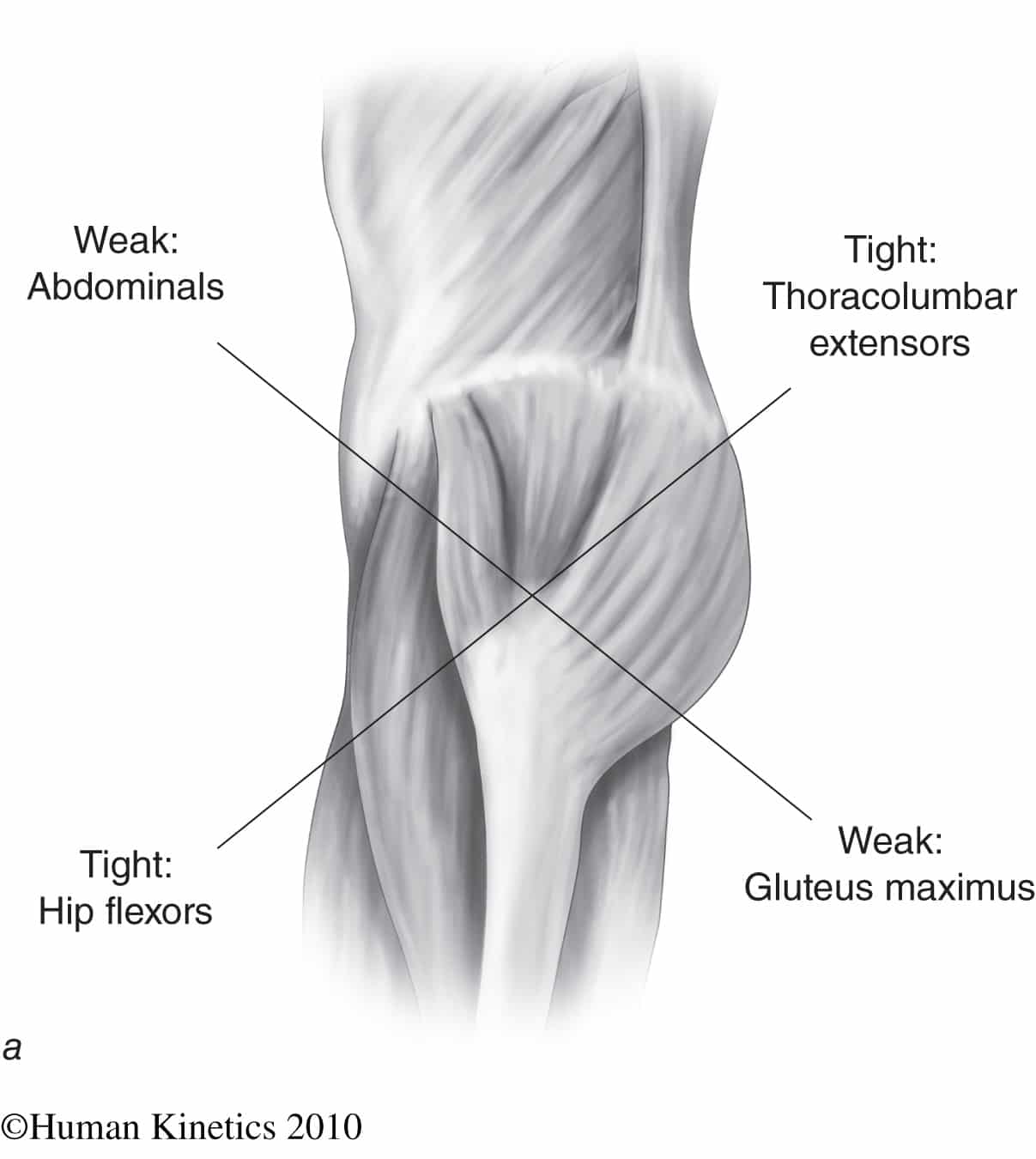Muscular Imbalance
We talked about upper crossed syndrome (UCS) last week, so you probably have somewhat of an idea as to what lower crossed syndrome (LCS) might entail. Remember in UCS how there were muscles that were either tight or over-stretched on the front and back of the body? The same holds true for the lower body, leading to common postural imbalances that can contribute to a whole lot of dysfunction. Take a look at the picture below to see what’s going on with LCS.
In LCS, there’s tightness in thoracolumbar extensors of the backcrossed with the tightness of the iliopsoas and rectus femoris on the front (these are the muscles responsible for hip flexion, or bringing your knee up to your chest). When we sit at a desk all day we may end up having permanent hip flexion. contributing to over-shortening and tightness. There’s also the weakness of deep abdominal muscles on the front of the body crossed with weakness in gluteus maximus and medius.
Muscular Imbalance
This type of imbalance creates issues in the lower back (around the lumbar and sacral vertebrae), at the joint, and at the hip joint.
Here are some common causes of this postural issue:
- Prolonged sitting, especially with bad posture
- Physical inactivity
- Uneven stimulation of these muscles
- Imbalanced strength training
And here are some common signs and symptoms:
- Anterior pelvic tilt
- The increased curve in the lower back
- Knee hyperextension
- Lower back pain
We hone in on strengthening those weakened muscles and stretching out the tight and over-shortened ones. Meanwhile, we supply you with mobility drills and corrective techniques for muscular imbalance. Therefore, making sure you don’t develop faulty posture, imbalance-related injuries, or muscles that are too weak to keep up with all you want to do in life.
Conclusion
Most importantly, are you dealing with body aches related to activity or exercise? We are here to help! At Symmetry, we will provide you with a physical therapy assessment to get to the root cause of your pain. Check out our Youtube channel for more tips and easy to follow exercises videos.

